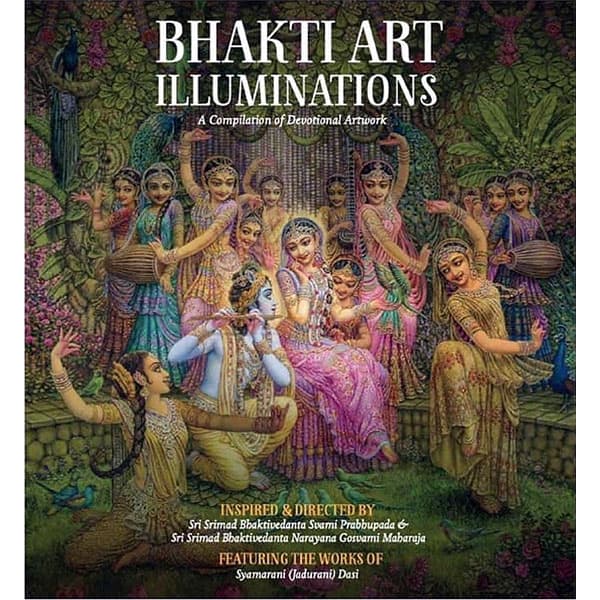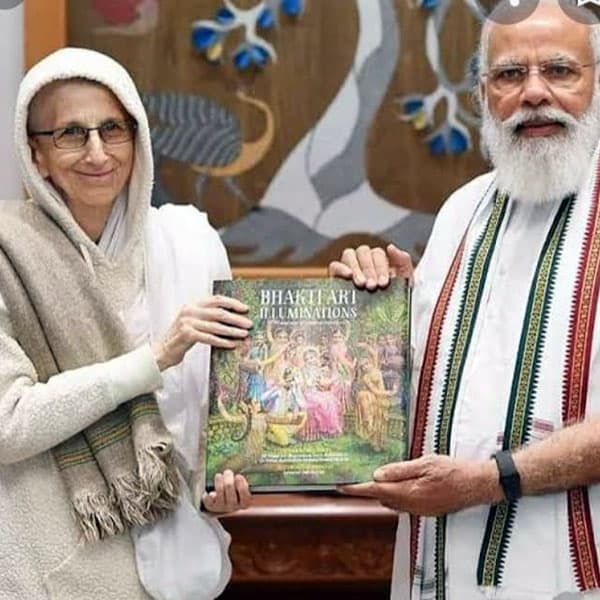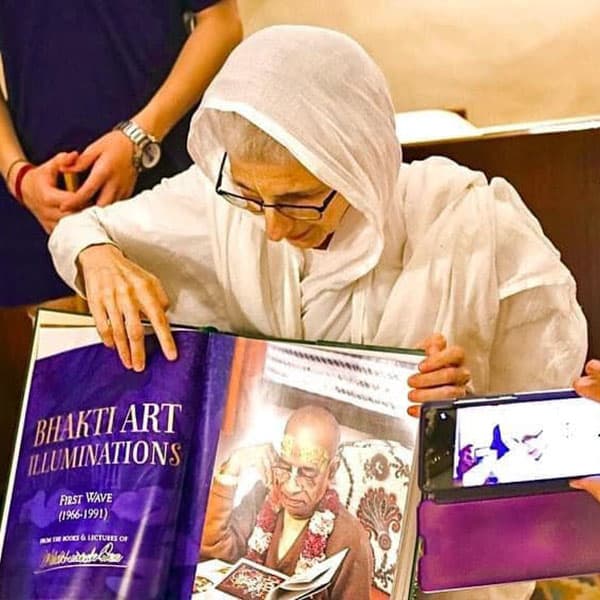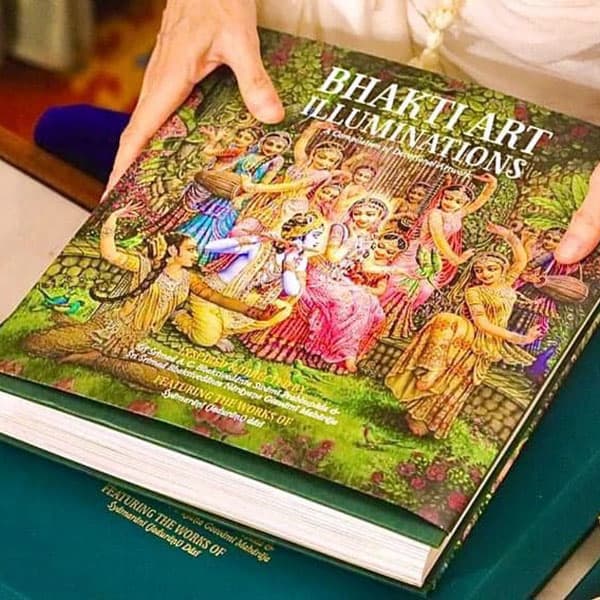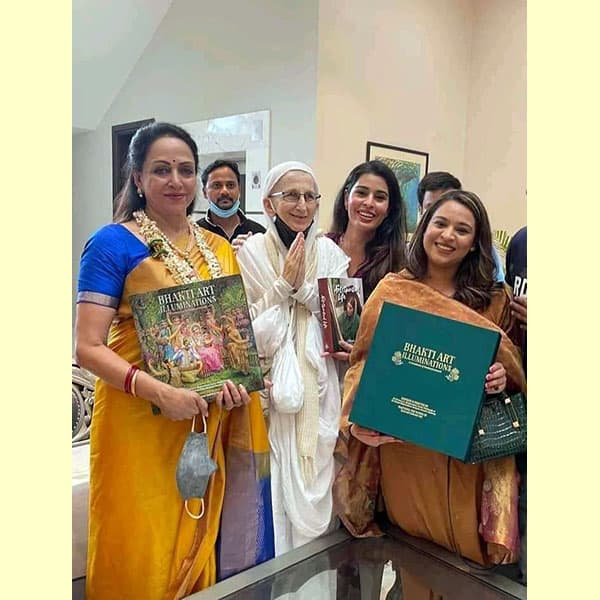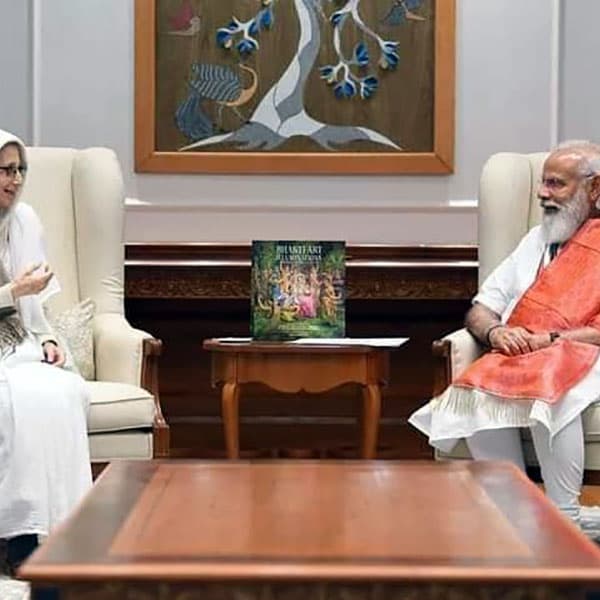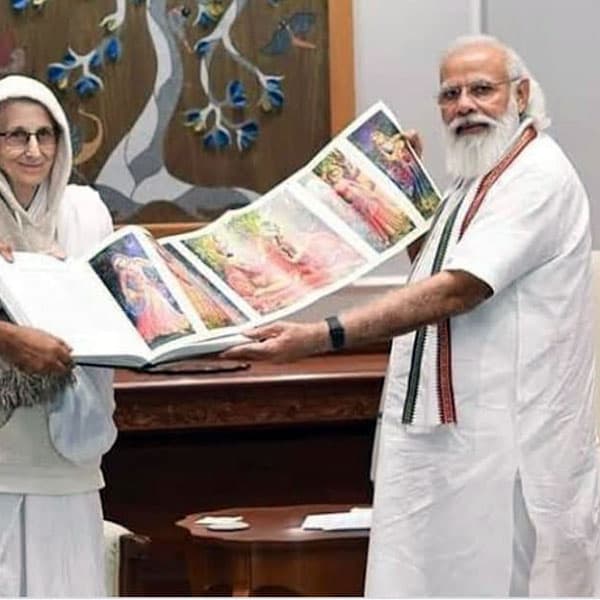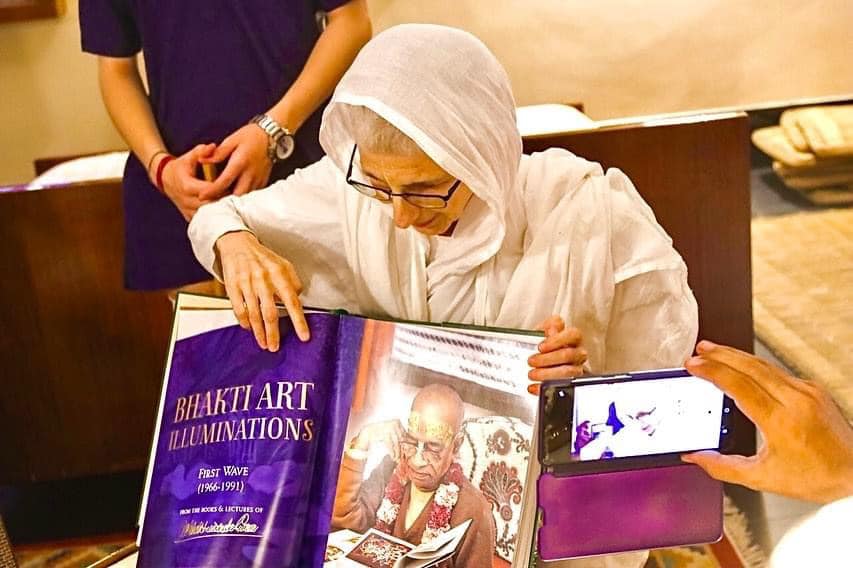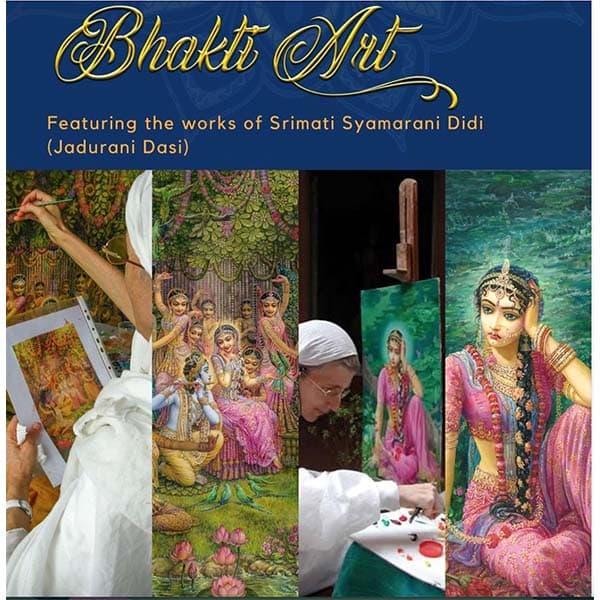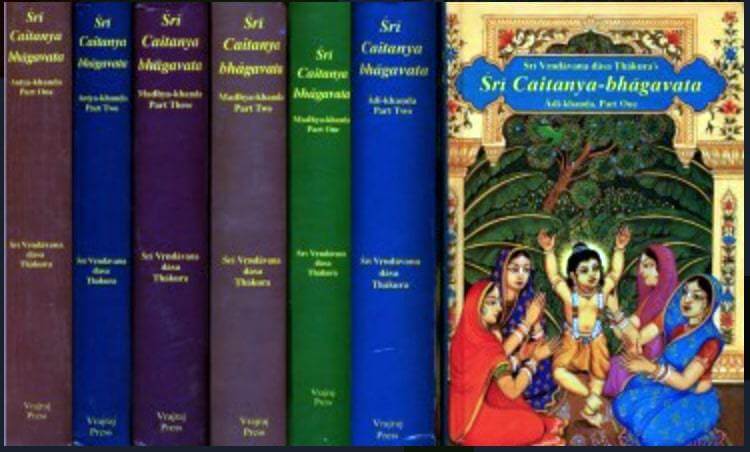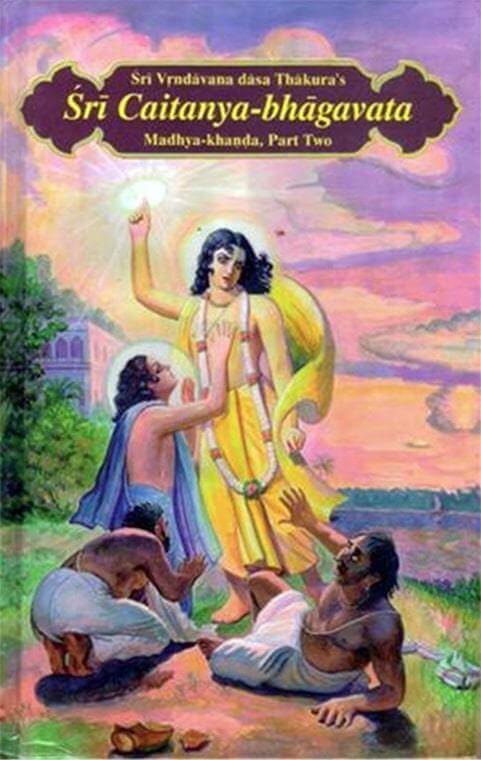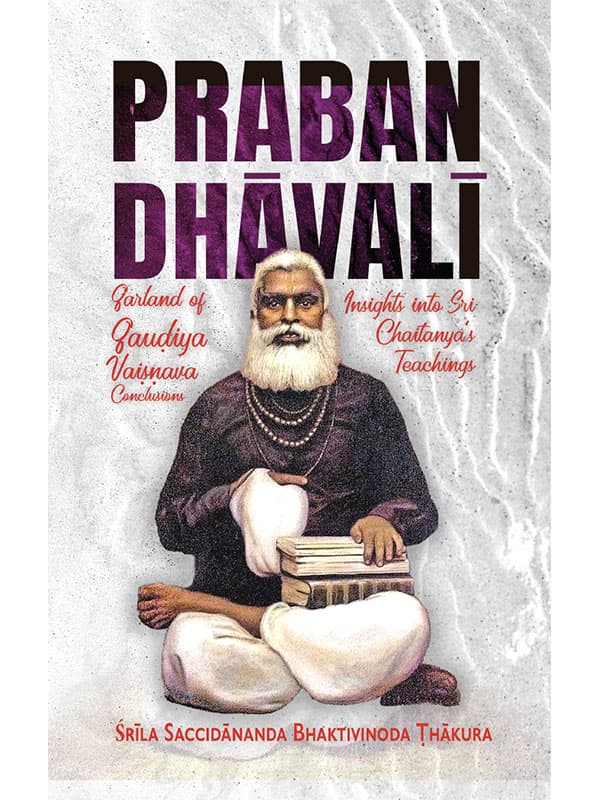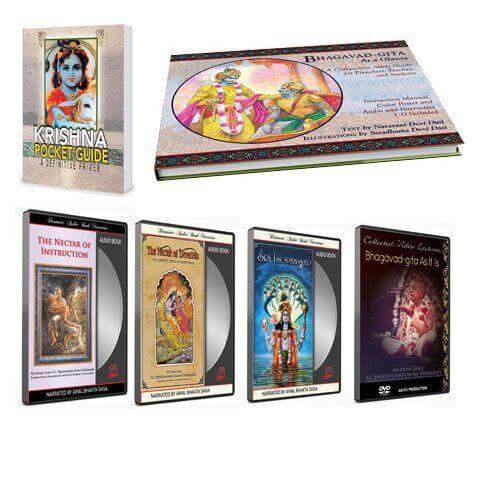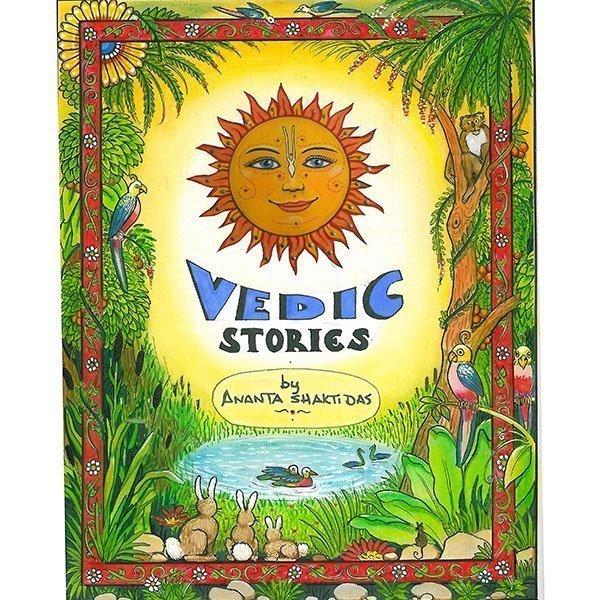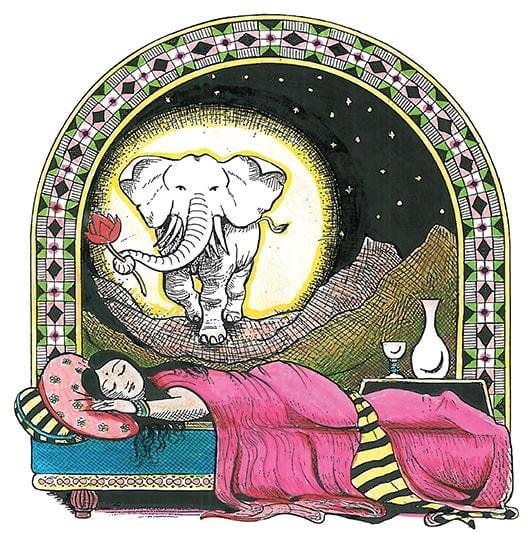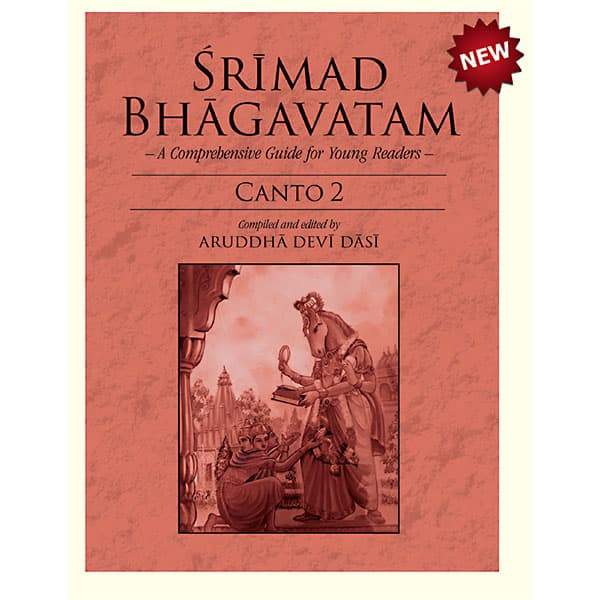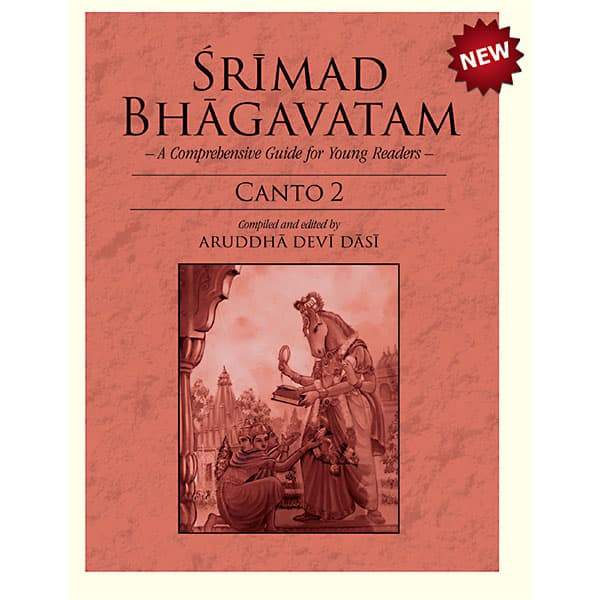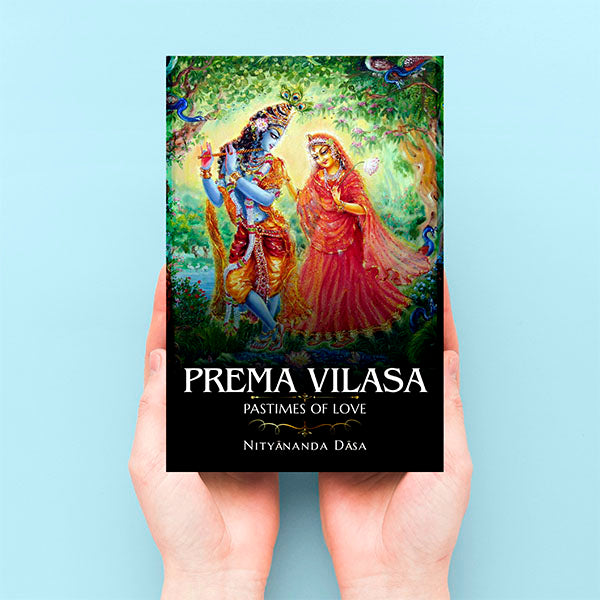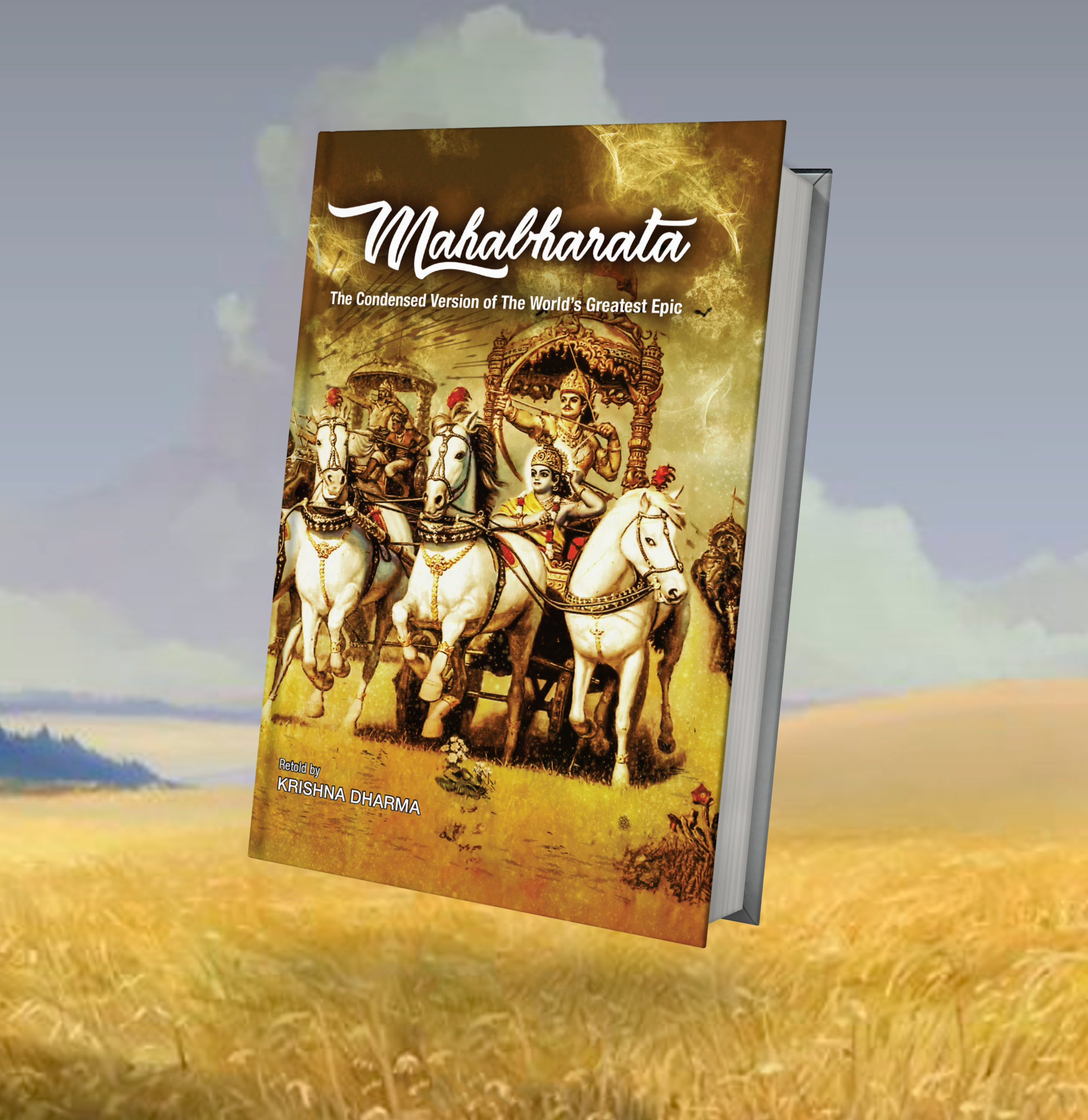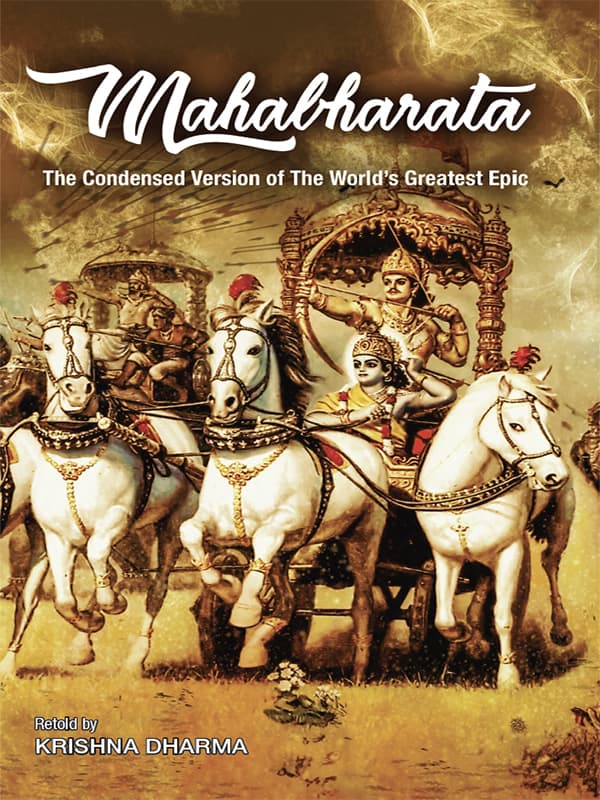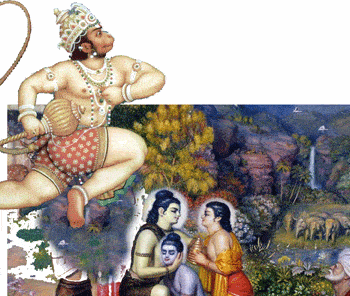説明
Buy Bhakti Art Illumination, A Compilation of Devotional Artworks by Syamarani (Jadurani). Histroy's most transcendental artbook.
From the reviewers:
"Much more than a book about art... an intimate glimpse into the history, artistic process, spiritual guidance, and esoteric secrets behind some of the most celebrated works of devotional art."
"Syamarani dasi is one of the pre-eminent artists of the bhakti-yoga movement, illustrating epic texts like the Bhagavad-Gita, Srimad Bhagavatam, Caitanya-caritmrta, Gita-govinda, Gopi & Venu-gita and more"
"Syamarani has spent her life imbibing her spiritual masters' realizations and teachings, and her entire life's work reflects the deep wisdom she has received. This is a very worthwhile read that furthers an understanding of devotion."
Prime Minister Modi of India joyfully gloss over this masterpiece on his weekly address to the nation, Mann ki bhat.
ABOUT THE ARTIST: SYAMARANI DASI
After graduating from Music and Art High School in 1964, Syamarani dasi became a student at New York City College, majoring in art and history. In 1966, at the age of 19, she met her spiritual master. Syamarani Didi’s artistic journey is marked by several distinct stylistic phases over the years, paralleling her technical and spiritual growth.
Recognized by her use of joyous, vibrant jewel tones, effulgent lighting, ideal beauty, and meaningful hidden details, her art is often described as sacred, visionary, Indian, and even postmodern. Drawing extensively from the Vedic literary heritage of India, Syamarani Didi’s work comprises esoteric, historic, and allegorical subjects in ancient and modern day contexts. Her allegorical works include compelling, easy-to-understand depictions of complex philosophical themes, as in “The Cycle of Birth and Death,” “Mahavisnu,” and “The Sage Sees with Equal Vision,”and her historic works include depictions of saints and kings from ancient times. Her most well-known and widely loved paintings are her ground-breaking portrayals of the Divine Couple Radha-Krishna and Their pastimes, most notably “Venu-Gita” and “Seva-Kunj,” which have achieved pop-icon status in India. These images have been absorbed into the Indian psyche and now permeate mainstream culture through the proliferation of pirated posters, stickers, unauthorized advertisements, and film. Yet, Syamarani Didi remains virtually unrecognized and anonymous, rarely having held an exhibition, and never having taken a penny as profit from her prolific work.
A NOTE FROM THE ARTIST
The last thing I would have imagined myself doing is publishing my own art book. From the mid 1970s – when my colleagues and I were painting for Śrīla Prabhupāda’s translations of the Vedic classics – up until 2006, it was the furthest thing from my mind. Even after I received the personal request from my śikṣā-guru Śrīla Nārāyaṇa Gosvāmī Mahārāja to publish an art book of my own paintings, I hesitated. I was reluctant to compile and display my own work. I did not want to show off. My work was clearly not superior to the work of my fellow bhakti artists. Moreover, I also knew that any merit my work possessed was due to Śrīla Prabhupāda, Śrīla Gurudeva, and my associate artists. I thought, “If I personally create an art book of my own works, I will surely get lost in false pride, which is one of the main causes for becoming weak in spiritual life.” Nevertheless, on several occasions, Śrīla Gurudeva requested me to publish an art book. He told me, “Just as other coffee-table books of devotees’ artwork have been published, I want you to create one with all the paintings you did for your Prabhupāda and for me.”
Then, in Hawaii, while looking over some computer printouts of his art team’s bas-relief murals, he reiterated his desire and told me to give a copy of the art book to the Prime Minister of India. Regarding the purpose for Srila Gurudeva’s request, my understanding is this:
(1) To inspire people to learn more about Śrī Kṛṣṇa’s glory.
(2) To encourage readers, through art, to go deeper into the bhakti philosophy, whether they are already engaged in the practice of bhakti or not. A picture is worth a thousand words.
(3) To show the glory of my gurus, the real artists. I am but one of their paintbrushes. It is they who manifested the paintings – by their mercy, empowerment, guidance, and teachings.
(4) To give a sense of peace and happiness to viewers, by which, worldly problems automatically reduce.
One day in 1974, Śrīla Prabhupāda commented about the extremely long hair that a couple of my fellow artists and I were sometimes painting on Kṛṣṇa and His associates. Visibly disturbed, he made statements like, “They are painting Kṛṣṇa with too much hair, like a hippy. They have this tendency.” And, “This painting is not good. It is like a hippy dance. It is like a plaything. They have painted crows in the picture.” I understood that we were small children, that he was encouraging us in the beginning to paint in any way we could. Later, in 1974, once we were able to accept more teaching, he corrected us. While those pre-1974 paintings are still present in Śrīla Prabhupāda’s earlier published books, most have been substituted for improved versions in later editions. For this publication, in order to please him, I requested my friend Kamala Melzack, a graphic designer, to help me to trim the hair of Kṛṣṇa and His associates.
I tell this history in more detail in my memoir, "The Art of Spiritual Life."
- Syamarani dasi
ABOUT THE BOOK✨
In this exquisite (10½” by 11½”) 450-page art book articles include:
• The ancient roots of Bhakti Art
• This unique art in the making
• Brief histories of the artist’s training by her two spiritual masters
• The intimate relationship between the two spiritual masters
• An interview with the artist
Srila Prabhupada Bhaktivedanta Swami Maharaja’s Gallery
• 145 paintings, including descriptions from Srila Prabhupada’s books
• Seven line-drawings
• 33 paintings by other Bhaktivedanta Book Trust Artists, and 17 collaborative art paintings
Srila Narayana Gosvami Maharaja’s Gallery
• 19 paintings with descriptions from Srila Maharaja’s books
• 43 line-drawings by the artist’s team and twenty of their bas reliefs, also with descriptions
• The painting process, illustrated. From sketch to completed work.
• Charts clarifying relationships between personalities in the paintings
• Glossary of Sanskrit words and terms

